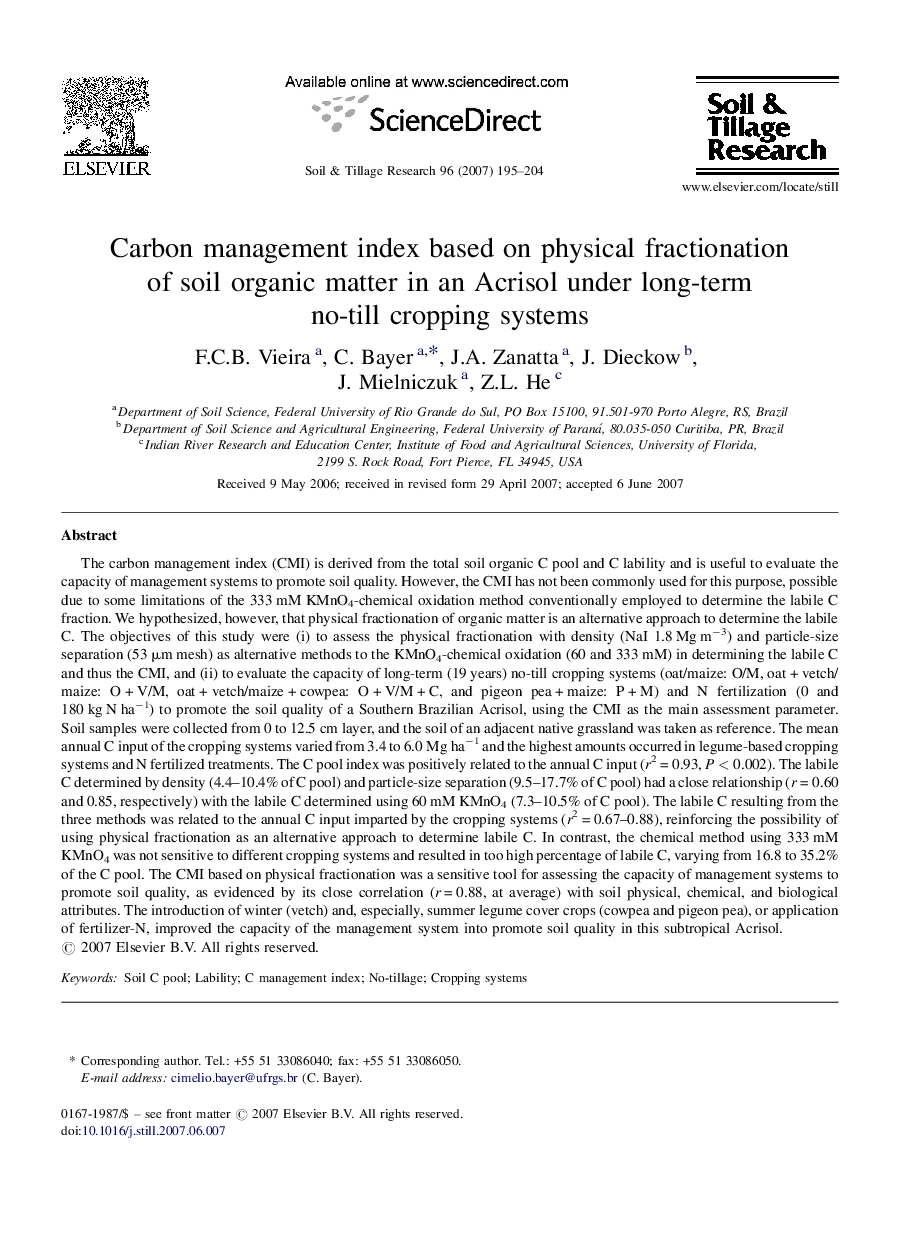| کد مقاله | کد نشریه | سال انتشار | مقاله انگلیسی | نسخه تمام متن |
|---|---|---|---|---|
| 306548 | 513101 | 2007 | 10 صفحه PDF | دانلود رایگان |

The carbon management index (CMI) is derived from the total soil organic C pool and C lability and is useful to evaluate the capacity of management systems to promote soil quality. However, the CMI has not been commonly used for this purpose, possible due to some limitations of the 333 mM KMnO4-chemical oxidation method conventionally employed to determine the labile C fraction. We hypothesized, however, that physical fractionation of organic matter is an alternative approach to determine the labile C. The objectives of this study were (i) to assess the physical fractionation with density (NaI 1.8 Mg m−3) and particle-size separation (53 μm mesh) as alternative methods to the KMnO4-chemical oxidation (60 and 333 mM) in determining the labile C and thus the CMI, and (ii) to evaluate the capacity of long-term (19 years) no-till cropping systems (oat/maize: O/M, oat + vetch/maize: O + V/M, oat + vetch/maize + cowpea: O + V/M + C, and pigeon pea + maize: P + M) and N fertilization (0 and 180 kg N ha−1) to promote the soil quality of a Southern Brazilian Acrisol, using the CMI as the main assessment parameter. Soil samples were collected from 0 to 12.5 cm layer, and the soil of an adjacent native grassland was taken as reference. The mean annual C input of the cropping systems varied from 3.4 to 6.0 Mg ha−1 and the highest amounts occurred in legume-based cropping systems and N fertilized treatments. The C pool index was positively related to the annual C input (r2 = 0.93, P < 0.002). The labile C determined by density (4.4–10.4% of C pool) and particle-size separation (9.5–17.7% of C pool) had a close relationship (r = 0.60 and 0.85, respectively) with the labile C determined using 60 mM KMnO4 (7.3–10.5% of C pool). The labile C resulting from the three methods was related to the annual C input imparted by the cropping systems (r2 = 0.67–0.88), reinforcing the possibility of using physical fractionation as an alternative approach to determine labile C. In contrast, the chemical method using 333 mM KMnO4 was not sensitive to different cropping systems and resulted in too high percentage of labile C, varying from 16.8 to 35.2% of the C pool. The CMI based on physical fractionation was a sensitive tool for assessing the capacity of management systems to promote soil quality, as evidenced by its close correlation (r = 0.88, at average) with soil physical, chemical, and biological attributes. The introduction of winter (vetch) and, especially, summer legume cover crops (cowpea and pigeon pea), or application of fertilizer-N, improved the capacity of the management system into promote soil quality in this subtropical Acrisol.
Journal: Soil and Tillage Research - Volume 96, Issues 1–2, October 2007, Pages 195–204